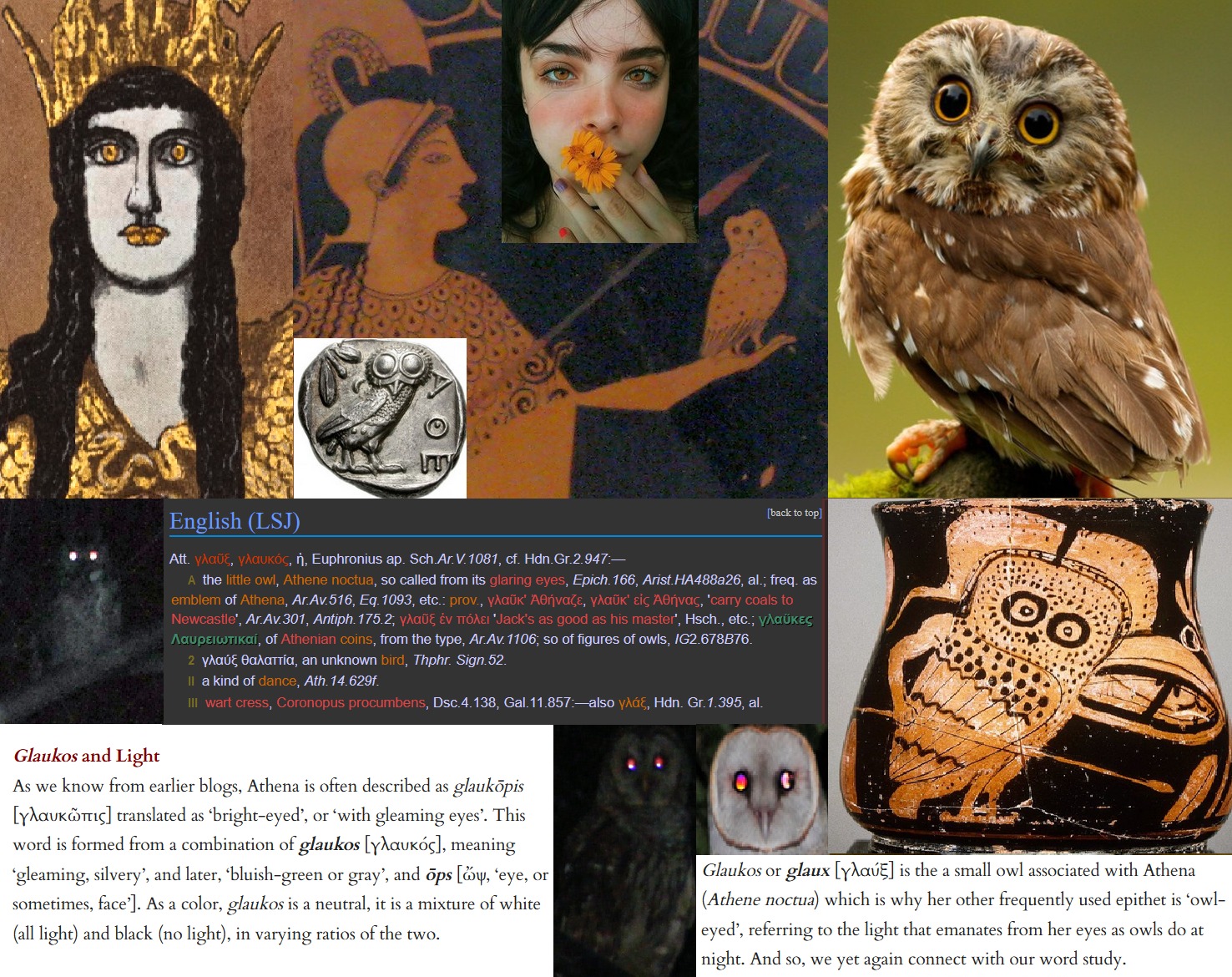My thoughts and musings on the eyes of Athene
I've
wanted to do a post on Athena's eyes for a while, but I rarely get time
to delve into this in a manner it deserves, so pardon the sloppy images
but I don't have time to beautify them.
Most of the times that I
see Athena's eyes described they are described as grey or blue in the
English translations, assumed from the Greek words glaukōpis or glaukos.
However I've also seen this interpreted as green or silvery. And I've
also seen this referenced as "moon-like", which can mean glowing white.
That's five different colors, which got me curious what these words
actually mean. After looking into it has led me to envision Athena as
either amber-eyed, or with the gleaming eyes of various hues an owl has
at night, or a combination of the two depending on the instance.
Athena,
often described as "glaukōpis" or "gleaming eyed", is associated with a
small owl named "glauks". This owl, like many owls, has bright
yellow/amber eyes. In Latin this bird is called Athene Noctua, It is
Athena's bird.
In addition to this, I noticed in the book "A
glossary of Greek birds by Thompson, D'Arcy Wentworth, 1860-1948 Sir"
that the entry right before the glauks bird is a bird called glaukion,
called "the golden-eye" for it's yellow eyes. And when reading through
the Homeric Dictionary by Autenrieth came upon the word glaukiao, which
references "the gleaming eyes of a lion" which, again, are yellow/amber
in color.
Again, I don't speak Greek, but this is my
interpretation. I think the eye color of Athena is a lot more open to
interpretation than I've seen in the translations. In the Odyssey Athena
transforms into a swallow, a bird which has gleaming black eyes. On
most pottery images I've seen she has dark eyes, which is also a
completely valid interpretation. Just my thoughts and ramblings...
 |
| A glossary of Greek birds by Thompson, D'Arcy Wentworth, 1860-1948 Sir. |
Source/Quote:
https://archive.org/details/glossaryofgreekb00thomrich/page/44/mode/2up




Comments
Post a Comment